- Home
- Peter Ackroyd
Thames Page 5
Thames Read online
Page 5
In Naturales Quaestiones Seneca declared that “when you have come to understand the true origin of rivers, you will realise that you have no further questions.” The source has always been considered to be the origin of power and of good fortune. When Shalmaneser III of Assyria found the source of the Tigris, “I took victims to sacrifice to my gods, I held a joyful feast.” Caesar told the high priest of Egypt that he would give up his wars if he could find the source of the Nile. Nero sent an expedition to find that same source, without success. In the mythology of Egypt the river was created at the beginning of the world—of the universe—and its origin would remain for ever undisclosed. The source of the Yellow River, or Huang He, a vital presence in China for many thousands of years and the genuine nurse of its culture, was not discovered until 1952.
For many scholars the journey to the origin of rivers was in a literal sense a return to Paradise. It was believed that the waters of the primal Eden circulated in the subterranean regions of the earth, and emerged from the mouths of caverns and abysses to irrigate the upper lands. The source was the place where the mysteries of eternal life might be vouchsafed. In the sermons of Bernard of Clairvaux there is a prayer that “the rivers of grace circle back to their fountain-head that they may run their course anew” nourishing the trinity of the spring, the wellhead and the stream. In this context the closest thing to the soul is the primal spring. Thus Chaucer, living on the Thames at Greenwich, addressed a friend upriver:
Scogan, that knelest at the stremes heed
Of grace, of alle honour and worthinesse,
In th’end of which streme I am dul as deed,
Forgete in solitarie wildernesse…
It is appropriate that the source of the Thames represents in part a mystery. The Elizabethan antiquarian and topographer, William Harrison, complained that people “make as much adoo” about the origin of the river as was once made “in times past of the true head of Nilus which…was never found.” He was referring to the fact that the Thames has two possible origins, one of them known as Seven Springs and the other more pertinently as Thames Head.
Geographically the palm might be awarded to Seven Springs in the parish of Coberley, or Cubberley, north of Cirencester; it is further from the sea than Thames Head by some 12 miles and, at 700 feet (213 m), more than 300 feet (91 m) higher above sea level. There is an ancient stone bulwark, with seven springs issuing from seven small openings in its wall. On the stone has been fixed a plaque with the words Hic Tuus O Tamesine Pater Septemgeminus Fons—“Here, O Father Thames, is your seven-sourced fountain.” There is, however, one large impediment to this claim. The stream that issues from the seven springs has always been known as the Churn, which eventually enters the Thames at Cricklade. No one doubts that it is ancient—its name derives from the Celtic word chwern or “swift”—only whether it is the source of the Thames.
The historical records are, on this matter, in agreement about the claims of Thames Head. In the early sixteenth century John Leland stated that the “Isis,” by which name he called the Thames, rose “not far from a village cawlled Kemble, within half a mile of the Fosseway” in the same century John Stow recorded that “the most excellent and goodly river beginneth in Cotswold, about a mile from Titbury, and as much from the hie way called Fosse,” and William Camden reported that “it riseth not far from Tarlton, hard by the famous Foss-way.” The authorities could be multiplied, but the inference is clear. The Fosse-Way has now been trans-figured into the A 433, but the source of the Thames is to be found in its immediate vicinity.
It rises in a field known as Trewsbury Mead, and lies beside a Roman camp which is now a mound still called Trewsbury Castle. The camp was no doubt located here because of its proximity to the spring, and it is likely that peoples more ancient than the Romans had a settlement here. The name of the neighbouring village of Ewen is derived from the Saxon word for a spring or source. So from earliest times this place has been celebrated, or sanctified, because of its flowing waters. Over the centuries the locale acquires its identity. Thomas Love Peacock expressed this process in his paean to the river, The Genius of the Thames (1810):
Let fancy lead, from Trewsbury Mead,
With hazel fringed, and copsewood deep,
Where scarcely seen, through brilliant green,
Thy infant waters softly creep,
To where the wide-expanding Nore
Beholds thee, with tumultuous roar…
As late as the eighteenth century there was a well at Trewsbury Mead, protected by a circular wall some 8 feet (2.4 m) in height. Then the wall was demolished or eroded, the well eventually filled in. All that remains as the mark of origin is a small group of stones like some basin or ring in the ground, in a hollow beneath a tree; in some respects these oolite stones, known as stone-brash or corn-grate, resemble a cairn or memorial of ancient worship.
The mythical properties converge at this place known as Thames Head. The tree protecting the source is an ash that has stood here for approximately two centuries. It once had “T.H.” carved upon its bark—some still see the letters, and some do not. But the emblem is not important. It is in any case a highly significant tree. In the mythology of the Norse people the roots of the ash-tree went down into the lower world. It connected the three circles of existence, and was known to be the path of spirits. The giant ash was known as the World Tree or Yggdrasil. In that mythology there was always a spring or pool beside it. In that mythology, too, a river ran from the tree of life. What could be more appropriate than that it should guard the source of the Thames? But there are other significant associations. The ash-tree is sacred to Poseidon, and is the tree dedicated to the power of water.
At the source of many rivers are to be found temples, or stones carved with the figures of divinity. Often wooden carvings were placed at the source as votive offerings. A hoar stone was erected at Thames Head as a memorial. The same stone is mentioned in a grant of lands given by King Athelstan in the year 931, when it was used as a boundary. Or it may have marked a place of sepulture, where some principal person was buried beside the origin of waters. It was later used as a horse-block or “upping stock” where traveller and horse could pause to refresh themselves with the clear water. It was replaced in the last century by a marble plinth upon which is carved “The Conservation of the River Thames 1857–1974. This Stone Was Placed Here to Mark the Source of the River Thames.”
Yet there was one problem for the thirsty horse and traveller during certain seasons of the year. Leland states that “in a great somer drought there appereth very little or no water, yet is the stream servid with many springes resorting to one bottom.” In the late eighteenth century John Boydell remarked in his History of the River Thames (1796) that “I do not think you will ever find any water in summertime.” The absence of water is still remarked two hundred years later. It is one of the mysteries of the Thames. There seems to be no nourishment at the source. For most of the year it remains dry ground. The line of the infant Thames can only be followed by a gentle declivity in the surrounding ground, so that it is possible to walk in the middle of the river without becoming wet.
There is of course water beneath the surface. A latter-day water diviner has calculated that there is running water at a depth of 5 or 6 feet (1.5 or 1.8 m), with a channel some 10 inches (254 mm) in width. At times of heavy rain the spring floods upward. There are photographs, taken in 1960 and 2000, of pools where there had been a well. In the photographs of 1960 small boys are to be seen in canoes beneath the ash-tree. There has been a diminution of water, however, and one early-twentieth-century oral historian recorded a local inhabitant as saying that “the springs be wakened in thaay owl ’ills, an ther yent so much water comes down as ’twas when I was a bwoy.” The clearance of woods and forests in the region has meant less condensation but, in addition, human artifice has played its part. A steam engine was placed beside the well to pump water for the Thames and Severn Canal, which ran on higher ground close by, a
nd in 1878 a pumping station was erected for the Great Western Railway works at Swindon.
Yet the lines and buried streams are still here. The path of the infant river in the declivity is marked by a straggling line of ancient thorns. Along that path there is a group of scattered stones that look very much like the ruins of a stone bridge; about half a mile further down is a large pool or basin, much more likely to be filled with water than Thames Head itself. It is known as Lyd Well or, in translation from Old English, “loud” spring. Yet Lyd may have a different connotation. It may be related to Ludd, the divinity of early London. There is an argument that Ludd is also the ancient god of the river. Lyd Well is the beginning of our pilgrimage beside the Thames.
PART III
Issuing Forth
The junction of the Cherwell and the Thames
CHAPTER 7
The Tributes
The Thames has many tributaries. There is good reason to honour them. The gods were meant to dance at the confluence of waters. The mingling of the tributary and the main river was deemed to be sacred. The site of entry was a holy place, guarded by the three seated goddesses who have been given the name of Matres. There is a significant clustering of cursus sites, of presumed Neolithic date, around the confluences on the Upper Thames. So the meeting of the rivers is an occasion for spiritual ritual.
There is one especial god for this purpose. The Celtic god Condatis—who is in some late Roman inscriptions associated with Mars, no doubt in his capacity as a healing power—takes his name from the Gallic epithet “watersmeet.” He is literally the god of the two streams, the confluens, and was worshipped as such. It is true that his cult is especially associated with northern Britain, and in particular with the area of the Tyne and the Tees, but there is good reason to believe that such an important deity travelled through the island.
The principal tributaries of the Thames are the Churn, the Thame, the Colne, the Leach, the Windrush, the Evenlode, the Cherwell, the Kennet, the Ver, the Wey, the Mole, the Medway, the Lea and the Roding. There are smaller rivers and streams that refresh and replenish the river—the Ampney Brook, the Gatwick Stream, the Ray, the Cole, the Blackwater, the Ock, the Lambourn, the Pang, the Loddon, the Wye, the Bourne, the Hogsmill and the Ember. There are also waters that stream into the tidal river, among them the Brent, Stamford Brook, Beverley Brook, the Wandle, Chelsea Creek, the Hole Bourne, the Fleet, the Walbrook, Deptford Creek, Barking Creek, the Beam, Rainham Creek, the Mar Dyke, Dartford Creek, Bill Meroy Creek, Cliffe Creek, Mucking Creek, Shell Haven Creek, Hole Haven Creek, Cliffe Fleet, Salt Fleet and the Yantlet Fleet.
Many are now buried; many are forgotten; many are today unhonoured and unsung. There are London rivers, for example, that have long been forced beneath the ground where they remain as conduits or as sewers. Some of these buried waters may have found their own courses and become “shadow rivers” without a name, silently running within the earth. Yet these ancient rivers still exert an influence upon the world above them. They can make their presence known in odours and in creeping dampness; the buried Fleet, for example, can still flood basements along its course. The lost rivers were once deemed to be responsible for ague and fever, and their valleys (now carved between the streets and buildings of the city) were peculiarly susceptible to mist and fog. In more recent times the presence of the underground waters has been blamed for the prevalence of allergies in their vicinity.
Spenser honoured the meeting of the Thames with the Medway and with the Lea as a token of cosmic as well as of natural order. In the vast poetical topography of Polyolbion (1622) Drayton invokes the “clear Colne and the lively Leech,” and “the bright Elnlode.” Drummond of Hawthornden in An Hymn of the Fairest Faire (1623) writes of the stream and of the river as:
…but one self-same essence, nor in ought
Doe differ, save in order.
So the river can become a metaphor for spiritual grace. In painting, too, Turner was ever alert to the mythical powers of the tributary. One of his most celebrated paintings is entitled Union of the Thames and Isis. The setting is Dorchester Mead, just below the ancient hills of Sinodun, and at this place the Thame and the Thames converge. Yet Alexander Pope must carry the palm as the poet of confluence, and in Windsor Forest (1713) he becomes the hierophant chanting holy names:
First the fam’d authors of his ancient name,
The winding Isis and the fruitful THAME;
The Kennet swift, for silver eels renowned,
The Loddon slow, with verdant alders crown’d;
Cole, whose dark streams his flow’ry island lave,
And chalky Wey, that rolls a milky wave;
The blue transparent Vandalis appears,
The gulphy Lee, his sedgy tresses rears;
The sullen Mole, that hides his diving flood,
And silent Darent, stained with Danish blood!
And we in turn can call them out from their modest retreats. The Windrush, extravagantly named, rises among the hills of the Cotswolds, and passes through Bourton and Witney before joining the bosom of its parent. Was it so named because it winds among the rushes, or rushes like the wind? By meditating upon its name Drayton declared that it “scowres” the riverine landscape and “hies her fast / Through the Oxfordian fields” but this was an exaggeration. It is pretty and it is peaceful, except at those points where it surges between the cottages of Bourton-on-the-Water. It is certainly true, however, that the Thames becomes wider and deeper immediately downstream from its confluence with the Windrush.
The Kennet mingles with the Thames at Reading. In Polyolbion Michael Drayton celebrated their confluence:
At Reading once arrived, clear Kennet overtakes
Her Lord the stately Tames, which that great Flood again
With many signs of joy doth kindly entertain.
It is, in other words, a holy marriage or sacred union testifying to the life principle of the world. It is an emblem of fertility. One of the early variants of Kennet is Cunetio, so there may be some vestigial reference to the generative organ of the earth goddess. The bridge here is known as the Horseshoe Bridge, the horseshoe being an ancient symbol of fortune. At the mouth of the Kennet there is an ancient burial ground, now known as Broken Bow, which may be a version of Broken Barrow. Objects of metal and of pottery have been dredged up at this confluence of waters, suggesting that offerings were made here. It is also clear from the archaeological evidence, with the finding of an extremely rare hut or shelter beside the river, that the area around the mouth of the Kennet and the Thames harboured a trading station in the mesolithic period. So this confluence was a commercial, as well as a sacred, site. The bridge itself is now covered with graffiti; among them “Christ Is Coming.”
The Ock, down the river from Abingdon, is the sole outlet for the surplus waters of the Vale of the White Horse; it was once the cause of so many floods that it rivalled the Thames. On its banks have been discovered the remains of an Iron Age religious centre as well as a temple of Romano-Celtic provenance. There was also here a mansio or lodging house for pilgrims, and a structure that may either be an amphitheatre or a walled sacred pool. The propinquity of the river suggests the latter. There was also a cemetery sited here. Some of the Roman bodies contained coins in their mouths, so that they might pay the ferryman.
The “sullen Mole” falls into the river just below Hampton Bridge; it is not particularly sullen, if water can in any case be supposed to suffer from that mood, and its name seems suspiciously like poetic association with the habits of the subterranean animal. Pope in fact borrowed the phrase from Milton who has “the Sullen Mole that runneth underneath.” Milton in turn took the description from Spenser who wrote that
Mole that like a Mousling mole doth make
His way still underground, till the Thames he overtake.
It is an impressive litany of poetic votaries for a small river, and the reference to the “underground” and to the mole are by no means fanciful. In the neighbourhood of Bo
x Hill and Norbury Park, it disappears and then revives. At times of drought the stream is dry at this point, but then is restored near Leatherhead. The antiquary, William Camden, believed that the Mole ran down into a dark cavern beneath the earth from which it was lifted by the power of nature. Defoe noted the same phenomenon and believed that the cause lay in little channels known as “swallows.” “Swallow holes” are in fact known to be a property of limestone rocks, which abound in this area. The Mole really does disappear and rise again, entering the Thames itself at Molesworth.
The river Churn begins its course among the headsprings at Seven Springs, which some believe to be the Thames itself, and in the space of 14 miles falls 400 feet (120 m) until it meets its quietus in the river. It was described by Michael Drayton as the “nimble-footed Churn” an accurate description, at least by the standards of poetical topography. It is, or was, a dancing little trout stream until the clear water of the tributary mingles with the turbulent brown river at Cricklade.
Just below Shiplake Lock the Lodden runs into the Thames. Pope describes it as the “slow Loddon,” but in truth it is not slow at all. It has a swift current, which in previous years supported many watermills. It also has a curious effect of its own. Swimmers of long experience have testified that anyone who swims against its current is invariably affected by sickness and nausea; there is no obvious explanation for this strange phenomenon, but nonetheless it is present. It leads inevitably to speculation that there are some parts of the river that create or harbour distinct properties that are not susceptible to rational analysis.

 The Clerkenwell Tales
The Clerkenwell Tales The Canterbury Tales
The Canterbury Tales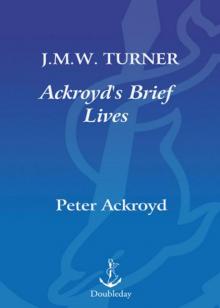 J. M. W. Turner
J. M. W. Turner Chatterton
Chatterton The Canterbury Tales – A Retelling
The Canterbury Tales – A Retelling Alfred Hitchcock
Alfred Hitchcock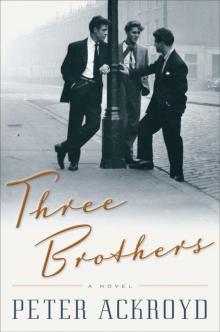 Three Brothers
Three Brothers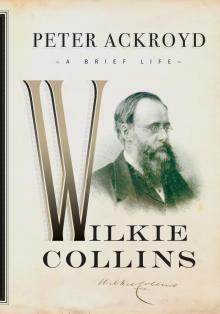 Wilkie Collins
Wilkie Collins Venice
Venice Poe
Poe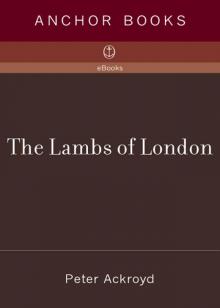 The Lambs of London
The Lambs of London London
London Queer City
Queer City Revolution, a History of England, Volume 4
Revolution, a History of England, Volume 4 Venice: Pure City
Venice: Pure City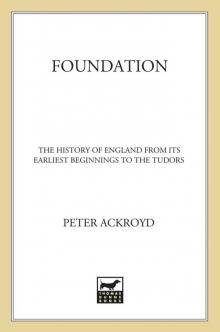 Foundation
Foundation Thames
Thames The Plato Papers
The Plato Papers The house of Doctor Dee
The house of Doctor Dee Rebellion: The History of England from James I to the Glorious Revolution
Rebellion: The History of England from James I to the Glorious Revolution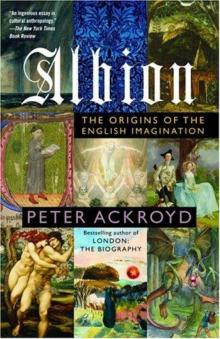 Albion: The Origins of the English Imagination
Albion: The Origins of the English Imagination The Fall of Troy
The Fall of Troy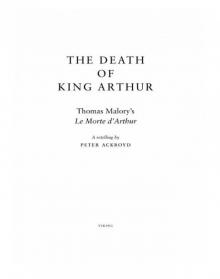 The Death of King Arthur
The Death of King Arthur The Trial of Elizabeth Cree
The Trial of Elizabeth Cree London: The Biography
London: The Biography The Casebook of Victor Frankenstein
The Casebook of Victor Frankenstein Hawksmoor
Hawksmoor Charlie Chaplin
Charlie Chaplin London Under
London Under